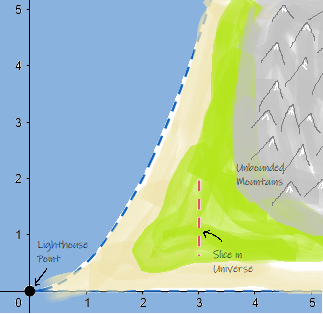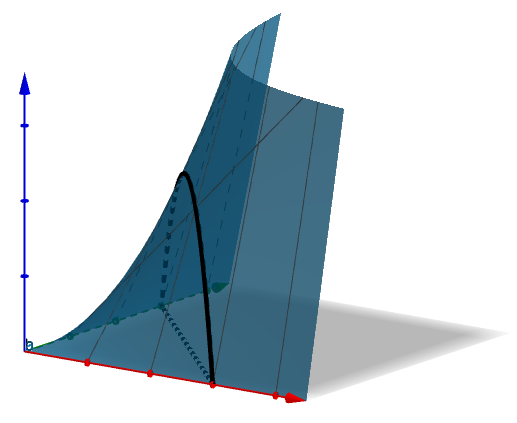Research
I am interested in o-minimal and real algebraic geometry, and specifically the role of symmetry (very broadly defined) in these contexts. Please consult the documents below for a summary of my projects established and ongoing.
- Research Statement (overview for a broader audience)
- Research Statement (detailed version)
-
Vandermonde Varieties in Type B
(
New Directions in Real Algebraic Geometry, Oberwolfach workshop, March 2023;
Purdue Model Theory and Applications Seminar, February 2023)
Abstract: This talk concerns the topology of Vandermonde varieties in the setting of Type B symmetry. Recent results of Basu and Riener leverage symmetry relative to the action of the symmetric group $S_n$ on $R^n$ in the study of the cohomology of semi-algebraic sets. Vandermonde varieties, which are classically defined by the first several generators of the ring of $S_n$-symmetric polynomials, play a key role in these arguments. With an eye towards extending the results of Basu and Riener to broader classes of symmetry, we examine Vandermonde varieties defined relative to the next major type of reflection symmetry. This talk will describe Vandermonde varieties within this setting and present new results (joint with Dr Saugata Basu), including the topological regularity of the intersection of a Type B Vandermonde variety with a fundamental region of the group's action.
Slides (MTA seminar)
-
Safety Protocols for the Cartography of Lands Unknown, Fantastic, and Symmetric
(Purdue Student Colloquium, April 2022)
Abstract: Exploring the realms within $\mathbb{R}^n$ is a dangerous business. Even after setting up an o-minimal structure for protection against the wilder subsets, difficulties remain for those who seek to understand the structure of definable sets and chart their homotopy and homology groups. Gabrielov and Vorobjov crafted a means to assemble compact sets to replace arbitrary definable sets, allowing for the application of certain investigative techniques while still preserving the information we are interested in discovering. When we happen to know that the lands we are exploring are symmetric, of course, further shortcuts become available. I will describe how Gabrielov and Vorobjov's technique can be honed for use in a method (developed by Basu and Riener) for understanding aspects of the structure of symmetric sets. [This is my attempt to describe recent research (joint with Saugata Basu) via an extended metaphor. Disclaimer: the contents have no connection to the actual study of cartography.]
-
Symmetry and Approximation by Compact Sets
(Purdue Student Colloquium, October 2021)
Abstract: In their paper, "Approximation of Definable Sets by Compact Families, and Upper Bounds on Homotopy and Homology," Gabrielov and Vorobjov describe a means by which one may (in one specific case) approximate an arbitrary semialgebraic subset of $\mathbb{R}^n$ by one that is closed and bounded. If our original set is described by the polynomials $\{h_1,\ldots, h_k\}$, then the approximating set is described by a collection of polynomials closely related to the given ones, and we obtain isomorphisms between the homotopy and homology groups of our original and approximating sets. We describe this construction, and discuss an application by Basu and Riener to algorithms concerning the cohomology of sets defined by symmetric polynomials.
-
A Tourist's Guide to O-minimality
(Rose-Hulman Mathematics Seminar, October 2022;
MAA Indiana Section Meeting,
September 2021; Purdue Student Colloquium, March 2019)
Abstract: Come, step away from the chaos of the real numbers to the idyllic world of o-minimality, where sets and functions behave nicely. This expository talk will take you on a tour of a few of the theorems within walking distance of the definition of an o-minimal structure, with brief glimpses of some proofs. Specifically, we will visit the Monotonicity Theorem, Cell Decomposition, and the Curve Selection Lemma, on the way to arguing that definable subsets of $\mathbb{R}^n$ are connected iff they are path connected. You may even leave with a souvenir proof that all groups are Abelian.
Slides (Rose-Hulman Mathematics Seminar)
Slides (MAA Indiana Section Meeting)
Slides (Purdue Student Colloquium)
-
Monotonicity and Totally Nonnegative Spaces Lightning Talk
(Symmetry,
Randomness, and Computations in Real Algebraic Geometry, ICERM Workshop
(held virtually), August 2020)
Abstract: We seek to investigate (in type $A$) the topological structure of the space of totally nonnegative upper triangular matrices in $SL(n, \mathbb{R})$ with 1's on the diagonal, in particular by investigating the fibers of certain maps to this space. We discuss instances in which strata of these fibers are graphs of monotone maps, and hence regular cells, and also instances in which we cannot simply apply monotonicity in order to establish regularity. This is a work in progress, done jointly with Dr. Saugata Basu.
-
Monotonicity and Totally Nonnegative Spaces
(Graduate
Research Day, Purdue University, November 2019)
Abstract: This talk investigates the structure of the space of totally nonnegative $n\times n$ upper triangular matrices with 1's on the diagonal. This space can be decomposed into strata which are images of certain maps associated to the elements of the symmetric group $S_n$. It has been shown that these strata are (topologically) regular cells. However, a shorter proof may be possible. We will describe the notion of monotone maps, the graphs of which are regular cells, and explain how an application of this concept to the fibers of the aforementioned maps could provide an alternate proof. This is joint work with Dr. Saugata Basu.
Slides from Advanced Topics Exam (on the same subject for a more specialized audience)
-
Introduction to Model Theory
Purdue O-minimal Geometry/Hodge Theory Seminar, August 2019)
This lecture was intended to provide the seminar participants with some initial background in model theory. Topics included languages, structures, formulas, theories, consistency, completeness, definable sets, the compactness theorem (ultrafilters and ultraproducts), quantifier elimination, strongly minimal sets and structures, and o-minimal structures.

